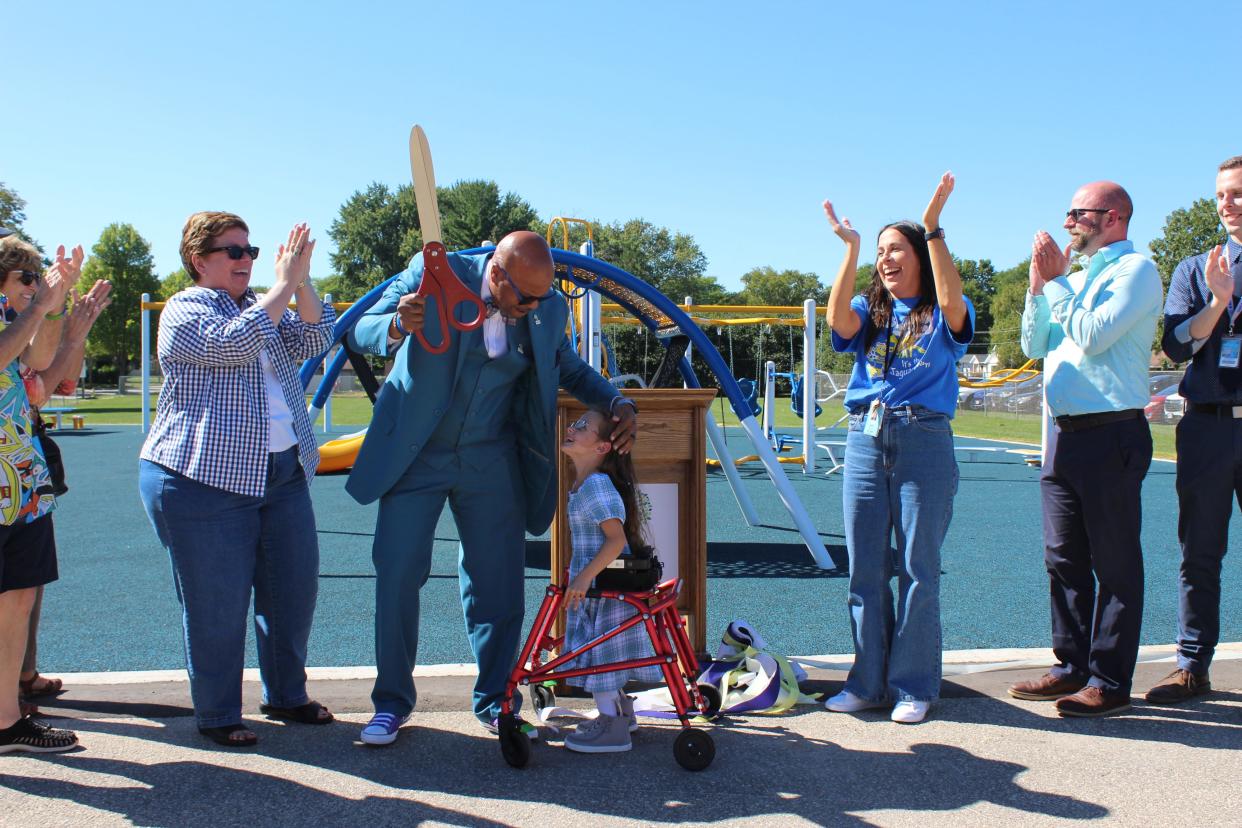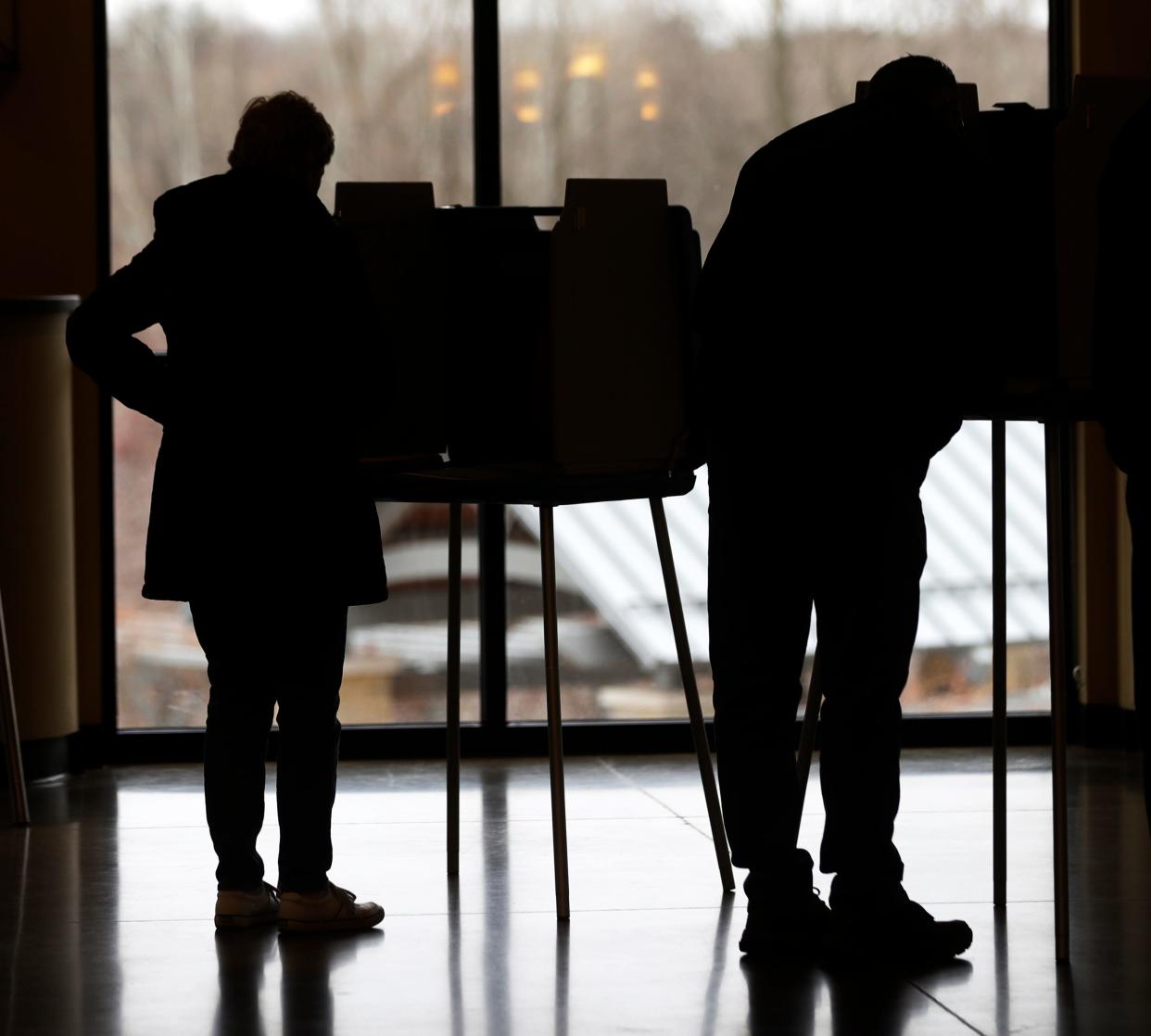If it seems Wisconsin school districts are asking voters for money more often, it's because they are
Wisconsin voters' ballots will be crowded in 2024. In addition to the presidential election and local races, voters can also expect to see school district referendums in both the spring and fall.
It’s estimated that a quarter of school districts in the state will put a referendum on the ballot in 2024, according to Julie Underwood, a dean emerita with the University of Wisconsin-Madison who focuses on education policy.
More than 50 school districts have already said they’re putting at least one referendum on the ballot in 2024, and many others are considering it.
Milwaukee Public Schools is seeking $252 million in additional operating revenue and the Mukwonago Area School District, southwest of Milwaukee, is asking voters for $102 million to build a new middle school.
If it seems like local school districts are asking voters for additional funding more often, it’s because, in general, they are.
More: Here are the types of school referendums and when they've succeeded in Wisconsin

Why are districts going to referendum?
School referendums have been on the rise in Wisconsin since 2016, according to Sara Shaw, a senior researcher with the nonpartisan Wisconsin Policy Forum.
Since 2016, there have been an average of 111 referendums on the ballot each year, up from an annual average of 92 between 2008 and 2015, Shaw said.
There is no one specific reason, Shaw said, rather compounding pressures over time: declining enrollment, aging buildings, inflation and state revenue limits that haven’t kept pace with rising costs for over a decade.
The revenue limits are a big sticking point.
There are two types of school funding referendums: operational and capital. Operational referendums allow school districts to increase their tax levy to get additional operating dollars.
In Wisconsin, there are limits on how much revenue a school district can generate, aptly called a revenue limit. But these revenue limits have not kept pace with inflation since 2009.
“Even in a family budget, if you don't get an increase in your salary, your buying power is completely hampered after 15 years,” Underwood said.

The only way to exceed this limit is through a taxpayer-approved operational referendum.
Rising costs and funding that doesn’t keep pace leaves districts with few options. They can cut costs, secure additional funding or do a combination of the two.
Going to referendum is a natural byproduct of the current school funding system, Underwood said.
“It's not a red flag for a district to go to referendum. It’s the way the system works,” she said.
Dale Knapp of research group Forward Analytics found that more districts are relying on operational referendum funding.
Last year, 258 of the state’s 421 school districts used operational referendum dollars, up from 197 in 2010 and 71 in 2000.
Knapp attributes most of this to the fact that revenue limits haven’t kept pace with inflation.
Since the beginning of the revenue limit era, which began in the '90s, nearly 20% of districts have used the operational referendum option six times or more, with 15 using it at least 10 times. Racine, Stevens Point and Sun Prairie have each used the referendum option 10 times or more, Knapp found.
The Wisconsin Policy Forum found that since 2010, school districts with declining enrollments are more likely to pass operational referendums, making up lost funding from fewer students. Forward Analytics found a similar trend.
Almost half of referendums are for construction projects, maintenance
The other kind of referendum, capital referendums, allow districts to borrow money to pay for construction or facility maintenance.
Each year since 2000, on average, 49% of referendums that school districts put on the ballot have been capital referendums, according to Shaw.
Most school districts don’t have enough money in their budgets to take on large maintenance projects or school renovations. For example, the Green Bay School District’s maintenance budget is about $3.5 million, which is not enough to keep up with roof or HVAC replacements for its 42 school buildings.
Wisconsin’s school buildings are also aging. According to a Department of Public Instruction statewide school building survey from 1999, the most recent available, 77% of Wisconsin’s schools were built before 1970.
Older buildings are more costly to keep up. In the Green Bay School District, the state’s fourth largest, a consulting firm estimated it would cost the district $400 million to maintain all its buildings for the next 30 years.
Capital referendums secure funding for new schools, renovations and routine maintenance that are outside of the district’s operating budget.
Will districts become more and more reliant on referendums?
Predicting the future trends of referendums is difficult, Shaw and Knapp said.
School districts don’t want to put a referendum on the ballot unless they think it’s going to pass, Shaw said.
For example, the Green Bay School District planned to put a $150 million capital referendum on the April ballot but opted to push it until fall because a school survey showed a lack of community support. The De Pere School District did the same thing with its capital referendum for a new high school.
“There's a calculation here both of what their financial needs are and what the willingness and ability of the community to pay additional is,” Shaw said. “And we do see some very preliminary signs that support for referendum might be waning.”
Those signs are how often referendums are passed by voters. May 2023 saw the lowest referendum passage rate (55%) since 2010, according to the Wisconsin Policy Forum.
The most recent biennium budget did provide a $325 per-student increase in the revenue limit this year and an additional $325 in 2025. And districts that had a limit of less than $11,000 per student were bumped up to that.
Knapp said he doesn’t expect a big increase in operational referendums because of the recent increase in district revenue limits.
“Even if that doesn't completely fix their financial stresses — which I don't think it's going to completely do it for most districts. But it's hard to go to referendum when you have just gotten fairly big increases in aid and in the revenue limit,” he said. “It becomes a much harder sell to voters.”
Danielle DuClos is a Report for America corps member who covers K-12 education for the Green Bay Press-Gazette. Contact her at dduclos@gannett.com. Follow on Twitter @danielle_duclos. You can directly support her work with a tax-deductible donation at GreenBayPressGazette.com/RFA or by check made out to The GroundTruth Project with subject line Report for America Green Bay Press Gazette Campaign. Address: The GroundTruth Project, Lockbox Services, 9450 SW Gemini Drive, PMB 46837, Beaverton, Oregon 97008-7105.
This article originally appeared on Green Bay Press-Gazette: Wisconsin school districts ask for funding referendums more often
